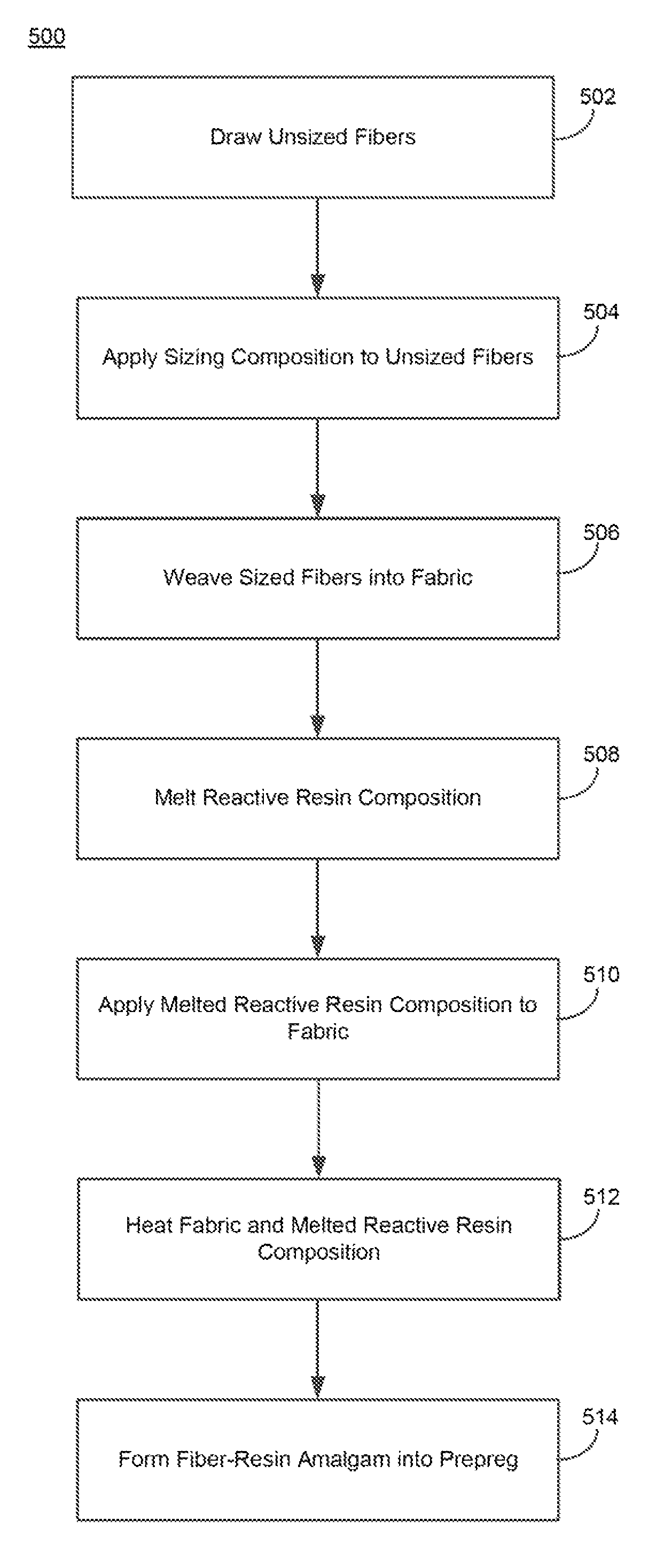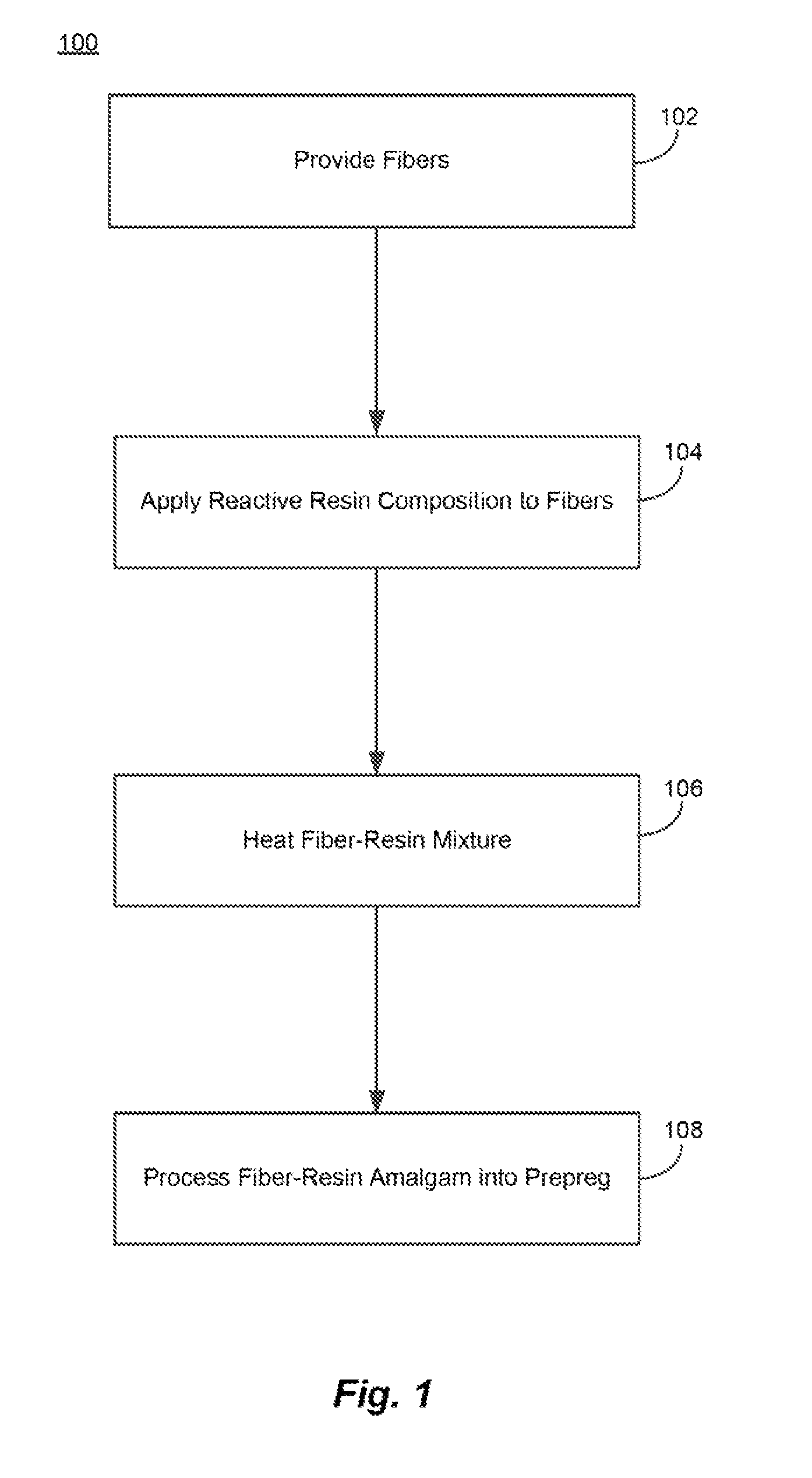Fiber-containing prepregs and methods and systems of making
a fiber-containing and composite technology, applied in the direction of coatings, layered products, etc., can solve the problems of difficult or impossible mechanically mixing of woven fibers with particles, difficult to distribute powdered composition particles beyond the surface of fibers into the bulk, and difficult to mill particles to very small sizes, etc., to achieve the effect of eliminating time-consuming process steps
- Summary
- Abstract
- Description
- Claims
- Application Information
AI Technical Summary
Benefits of technology
Problems solved by technology
Method used
Image
Examples
Embodiment Construction
[0024]The present application includes methods of making prepregs having a polymerized resin matrix made from a reactive resin composition that includes monomers and / or oligomers that can polymerize to form the resin matrix. Exemplary prepregs may include a plurality woven or nonwoven glass fibers combined with the reactive resin composition that may include a polyalkylene terephthalate precursor such as cyclic butylene terephthalate (CBT), or a polyamide precursor such as caprolactam. In some examples, the plurality of fibers may include reactive glass fibers that contain a polymerization agent to facilitate the polymerization of the reactive resin composition. In a subset of the examples, the polymerization agent may include a coupling moiety that covalently bonds the polymerization agent to the glass fiber, and an initiator moiety that initiates the polymerization of the reactive resin composition. Exemplary prepregs may include sheets that either lay flat or get wound into a cyl...
PUM
| Property | Measurement | Unit |
|---|---|---|
| length | aaaaa | aaaaa |
| melted viscosity | aaaaa | aaaaa |
| melting point | aaaaa | aaaaa |
Abstract
Description
Claims
Application Information
 Login to View More
Login to View More - R&D
- Intellectual Property
- Life Sciences
- Materials
- Tech Scout
- Unparalleled Data Quality
- Higher Quality Content
- 60% Fewer Hallucinations
Browse by: Latest US Patents, China's latest patents, Technical Efficacy Thesaurus, Application Domain, Technology Topic, Popular Technical Reports.
© 2025 PatSnap. All rights reserved.Legal|Privacy policy|Modern Slavery Act Transparency Statement|Sitemap|About US| Contact US: help@patsnap.com



